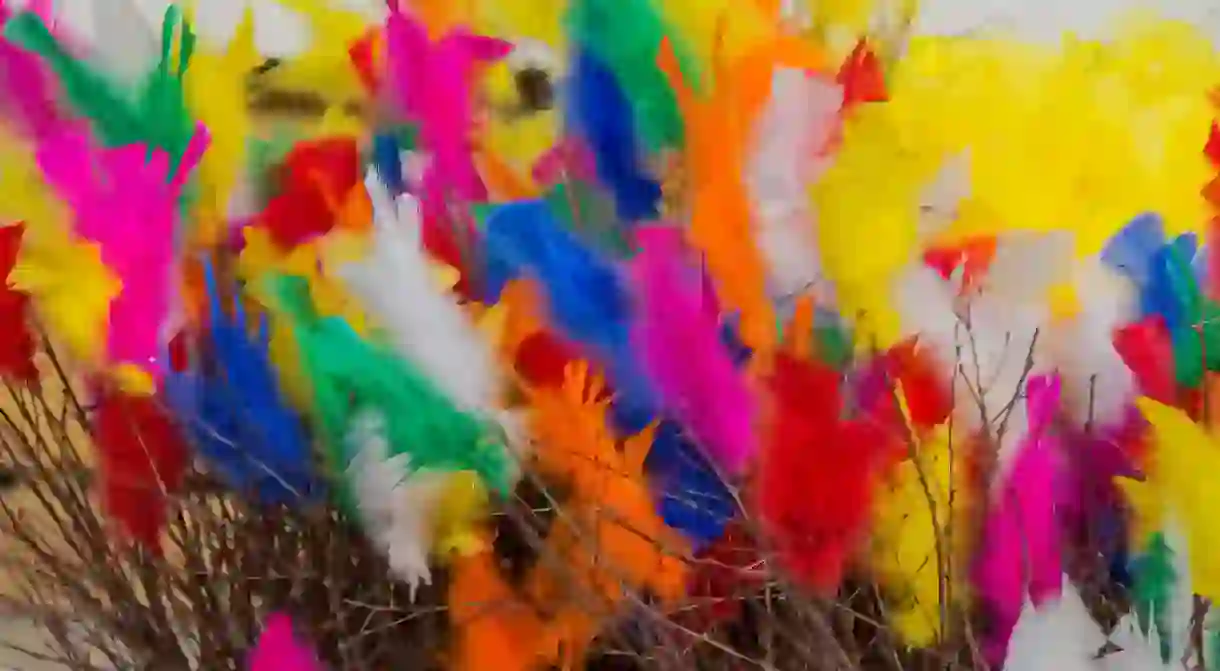A Very Swedish Guide to Celebrating Easter

When Easter rolls around in Sweden, it’s often the signal for Swedes to head out to their stuga or country cottage. The weather is (hopefully) getting warmer and, because many country cottages don’t have central heating, this is what Swedes – the majority of whom live in and near urban centres – have been waiting for: the chance to get out into the countryside, air out the country house for the season, and reconnect with their roots.
The Easter break coincides with the school break, and so, when taken with the long weekend, it’s a good ten days of holiday for many people. Up north, people tend to go to their ski cottage, while further south they head to the forest and fields. While Sweden is a very secular country, Swedes are happy to embrace traditions that have religious origins.

Once the country house or ski cottage is cleaned out and the garden put into some sort of order, you can expect a slew of family and friends to arrive – and once they do, the decorating begins. The children and a few adults will gather at the kitchen table or on the porch and start painting eggs, an ancient tradition meant to bring the bright colours of spring to the Easter table. These days, some people supplement with pre-painted eggs or even plastic eggs, but it would be a rare Easter that didn’t witness at least some egg-painting.

The painted eggs are then gathered in baskets to act as a centrepiece on the table, and hung from trees or birch twigs (which represent the suffering of Jesus Christ) with brightly coloured feathers. Some are scattered about in the garden – slightly hidden but not too much – for the children to later find during the Easter egg hunt, and a number of unpainted boiled eggs are also set aside to accompany the big meal.

In addition to painting eggs, gathering birch twigs and decorating them with feathers, children dress up as Easter witches. They grab old clothes from a trunk or the attic, don colourful headscarves, and paint their cheeks red and with dots. Then, they go around the neighbourhood and offer handicrafts or paintings they’ve made in exchange for sweets.

When they return home they have an Easter egg hunt – more sweets! – that involves solving riddles and finding clues. Once all the games and fun are complete, it’s time for Easter lunch.
Traditional foods such as pickled herring, salmon, and the classic holiday dish Jansson’s Temptation are the main stars of the smörgåsbord, but often you’ll also find a big piece of roasted meat (usually lamb) and a variety of side dishes. There will also be plenty of beer, as well as snaps – a spiced vodka also known as brännvin or aquavit, which is served either in small bottles of varying flavours (which represent different regions of Sweden) or from one big bottle on the table (which will be empty before Easter lunch is over). Many toasts will be made in order to facilitate the drinking, and the children will drink påskmust, a cola drink that is produced specifically for holidays.

When everyone is done eating, the plates are cleared, the kids go play and the adults have more drinks, before everyone takes a late afternoon walk, cosy in the knowledge that if spring hasn’t quite arrived yet, it isn’t far away.














